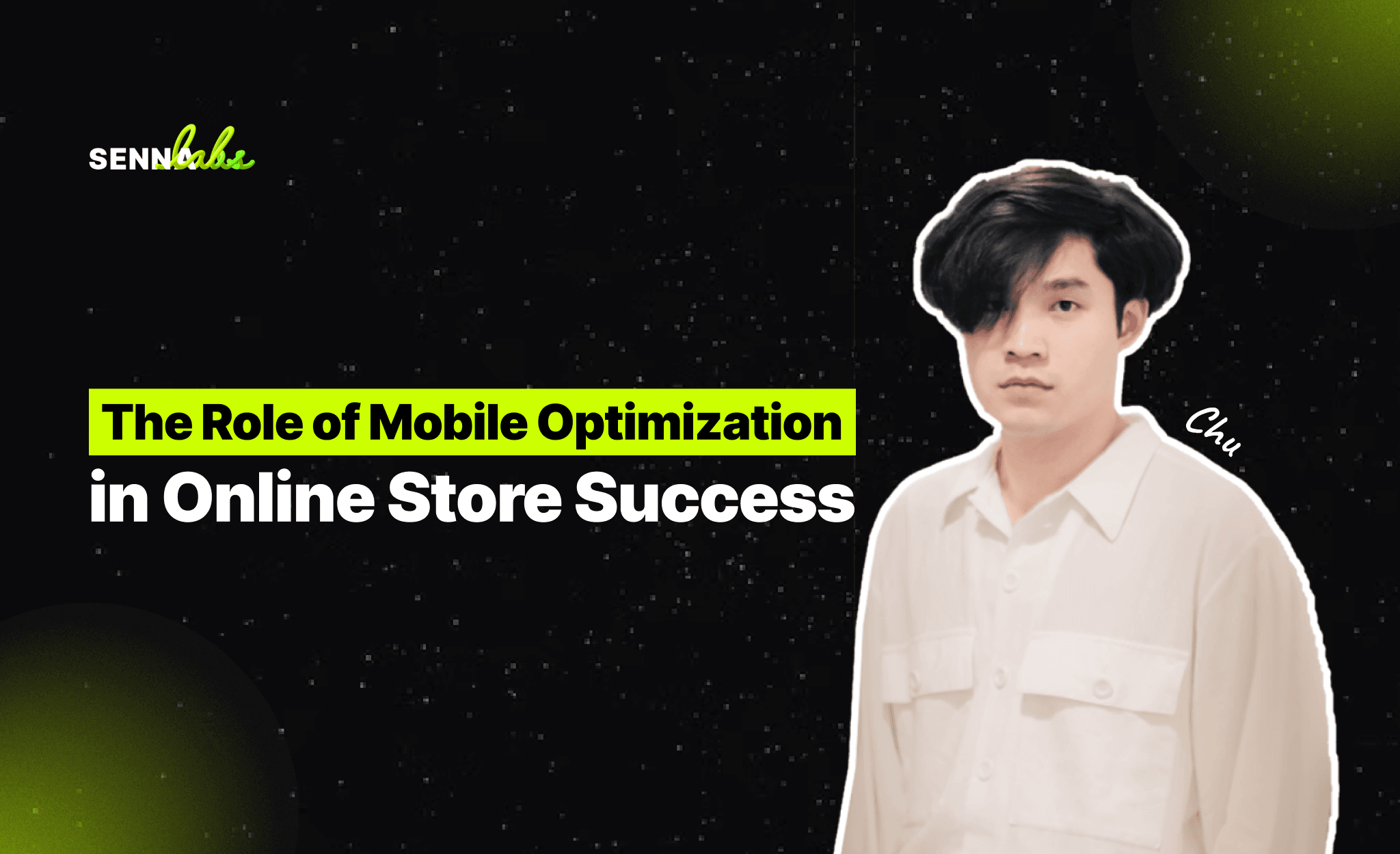The Role of Mobile Optimization in Online Store Success
Share

Mobile devices are now the primary way people browse and shop online. According to recent studies, over 50% of e-commerce traffic comes from mobile devices, and that percentage is growing steadily. For online stores, this shift means one thing: mobile optimization is no longer optional—it’s essential. A mobile-friendly website ensures a seamless shopping experience for users, improves your search engine rankings, and boosts conversions.

This article explores the importance of mobile optimization for e-commerce success and provides actionable tips to help online store owners make the most of this trend.
Why Mobile Optimization is Critical for Online Stores
1. Majority of Online Traffic is Mobile
With smartphones becoming a primary tool for shopping, a significant portion of e-commerce sales now occurs on mobile devices. A poorly optimized mobile site can drive potential customers away and cost you valuable sales.
2. Google Prioritizes Mobile-Friendly Sites
Google uses mobile-first indexing, meaning the mobile version of your site determines your search engine rankings. A mobile-friendly design is crucial for SEO and helps your store appear higher in search results.
3. Improves User Experience (UX)
A seamless mobile experience keeps users engaged, reduces bounce rates, and increases the likelihood of conversions. Slow loading speeds, awkward navigation, or unresponsive designs can frustrate customers and send them to competitors.
4. Mobile Shopping is Convenient
Shoppers expect to browse, compare, and purchase products on the go. A well-optimized mobile site caters to this expectation and builds trust with customers.
Key Elements of Mobile Optimization for E-commerce
1. Responsive Design
Responsive design ensures that your website adapts to different screen sizes and resolutions, providing a consistent experience across devices.
-
How to Implement: Use e-commerce platforms like Shopify or WooCommerce, which offer mobile-responsive templates.
-
Benefits: Enhances usability and ensures your site looks professional, regardless of the device.
2. Fast Loading Speeds
Mobile users expect pages to load quickly. A delay of even a few seconds can lead to lost sales.
-
How to Optimize:
-
Compress images using tools like TinyPNG.
-
Minify CSS, JavaScript, and HTML files.
-
Use a content delivery network (CDN) to reduce server load times.
Example: The fashion retailer in our use case reduced their page load time by 40%, which directly contributed to their sales increase.
3. Simplified Navigation
Mobile users need intuitive navigation to find products quickly. Overcomplicated menus or tiny buttons can frustrate users and increase bounce rates.
-
Tips for Better Navigation:
-
Use a simple menu with clear categories.
-
Include a prominent search bar.
-
Add a sticky navigation bar that remains visible as users scroll.
4. Optimized Product Pages
Product pages should be mobile-friendly, with clear visuals and easy-to-read descriptions.
-
What to Include:
-
High-resolution images with zoom functionality.
-
Short, scannable product descriptions.
-
Prominent call-to-action buttons like "Add to Cart" or "Buy Now."
5. Streamlined Checkout Process
The checkout experience can make or break a sale. A clunky or complicated process on mobile devices can lead to abandoned carts.
-
How to Simplify Checkout:
-
Enable guest checkout to avoid forcing account creation.
-
Offer multiple payment options, such as PayPal or Apple Pay.
-
Use autofill for forms to save users time.
Example: After implementing a one-page mobile checkout process, the fashion retailer saw a 15% decrease in cart abandonment rates.
6. Mobile-Specific Features
Leverage mobile-specific features to enhance the shopping experience.
-
Ideas to Try:
-
Add a click-to-call button for customer support.
-
Enable push notifications for order updates or promotions.
-
Use location-based services to offer personalized recommendations.
Actionable Steps for Mobile Optimization
-
Run a Mobile-Friendly Test: Use Google’s Mobile-Friendly Test tool to evaluate your site’s performance on mobile devices. It provides insights and fixes for common issues.
-
Audit Your Site’s Design: Regularly review your site’s mobile layout, ensuring elements like buttons, images, and text are appropriately sized and spaced.
-
Prioritize Core Web Vitals: Focus on metrics like Largest Contentful Paint (LCP), First Input Delay (FID), and Cumulative Layout Shift (CLS) to enhance performance.
-
Monitor Analytics: Use tools like Google Analytics to track mobile traffic, bounce rates, and conversion rates. Identify pages that perform poorly on mobile and prioritize them for optimization.
Real-World Example: A Fashion Retailer’s Success
A local fashion retailer struggled with low mobile sales despite significant website traffic. Their site had slow loading speeds, unclear navigation, and an outdated design. After auditing their site, they implemented the following changes:
-
Redesigned their site with a mobile-first approach.
-
Added a sticky navigation bar and simplified menus.
-
Optimized images for faster loading.
-
Introduced a one-page checkout process with multiple payment options.
Results:
-
Mobile sales increased by 40%.
-
Cart abandonment rates dropped by 15%.
-
The overall bounce rate decreased by 20%, reflecting improved user engagement.
Conclusion:
Mobile optimization is a cornerstone of e-commerce success. With the majority of online shopping taking place on mobile devices, creating a seamless and user-friendly experience is essential. From responsive design to streamlined checkouts, these strategies can help you attract and retain mobile shoppers, improve your search engine rankings, and boost sales.
By learning from success stories like the fashion retailer, it’s clear that investing in mobile optimization pays off. Start optimizing your online store for mobile today and ensure your business thrives in an increasingly mobile-first world.

Share

Keep me postedto follow product news, latest in technology, solutions, and updates
Related articles
Explore all


